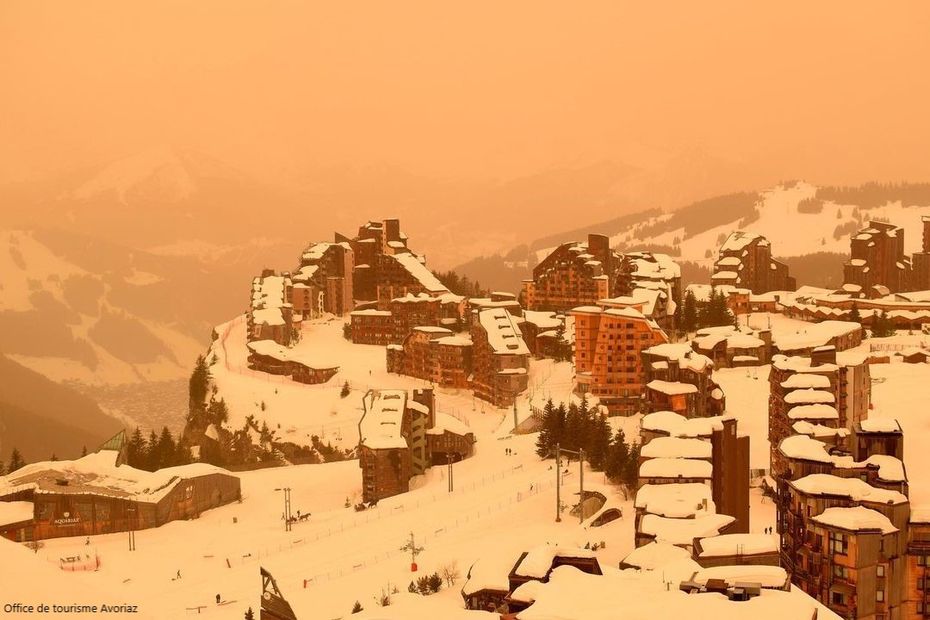Researchers are studying the impact of Sahara sand on the snowpack. An orange film had sprinkled the alpine reliefs this weekend. Although covered, its impacts may last over time.
–
The Alps woke up on Saturday morning in an almost lunar atmosphere. A science fiction sky emanating a yellow-orange light. From Gets to Alpe d’Huez, from Collet d’Allevard to Annecy, this phenomenon has caused an avalanche of publications on social networks.
And it is on the mountains that the breath of the desert was most spectacular, transforming the snow into gold under the effect of the Saharan sand. This episode of Saharan dust deposition is not without consequences on the snowpack. Scientists from Toulouse and Grenoble are working on this phenomenon to identify its consequences.
On this subject, the editorial staff recommends
–
Because in addition to the orange tone they give to the snow, the dust from the Sahara has an impact on the snowpack. “They make the snow absorb more energy and it will melt much faster. This dust will tend to shorten the duration of the snowfall which, in a cascade, will have consequences on the moment when the water will be available for dams, agriculture, etc. It will also have impacts on soil temperature and ecosystems “, explains Marie Dumont to France 3 Alpes, director of the snow study center for Météo France and the CNRS in Saint-Martin-d’Hères (Isère).
Pollution, biodiversity …
Since the arrival of the Saharan sand this weekend, new snowfall has covered the orange layer. Even if it is no longer visible, it has not disappeared. “At some point in the season, this dust will come out and as long as it stays on the surface, it will have an impact”, adds the researcher. Researchers also ask walkers to take a sample of orange sand to help them study this event.
In particular, it had the effect of degrading the air quality in Lyon and in the region. “These dust clouds brought with them high levels of PM10 particle concentrations”, explained Mark Parrington, scientist at Copernicus.
On this subject, the editorial staff recommends
–
This meteorological phenomenon was particularly intense and early in the season last weekend, but it is not new and is not necessarily linked to climate change. “It’s very hard to link an isolated event to global warming, says Marie Dumont. We are studying the trends of these deposits over recent years and for the moment, we don’t really have an answer (…) These deposits arrive every year, they are more or less strong so we see them more or less , but it happens every winter. “
On the other hand, it is the deposits of pollutants on the snowpack that are of most concern to researchers. “Pollution has the same effect as this dust except that it is black instead of orange. In general, it is in smaller quantities and therefore less visible (…) but it is this which, in the Alps, has the strongest impact “, she adds.
–
Continue reading on these topics
–
–


